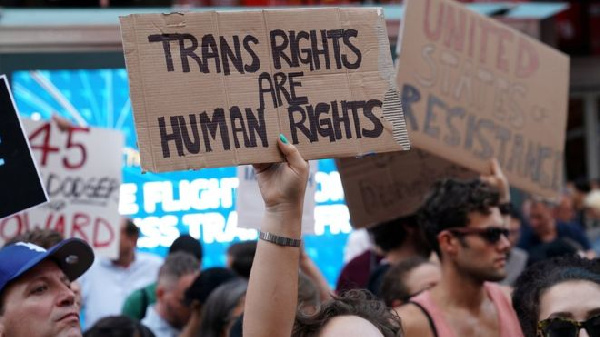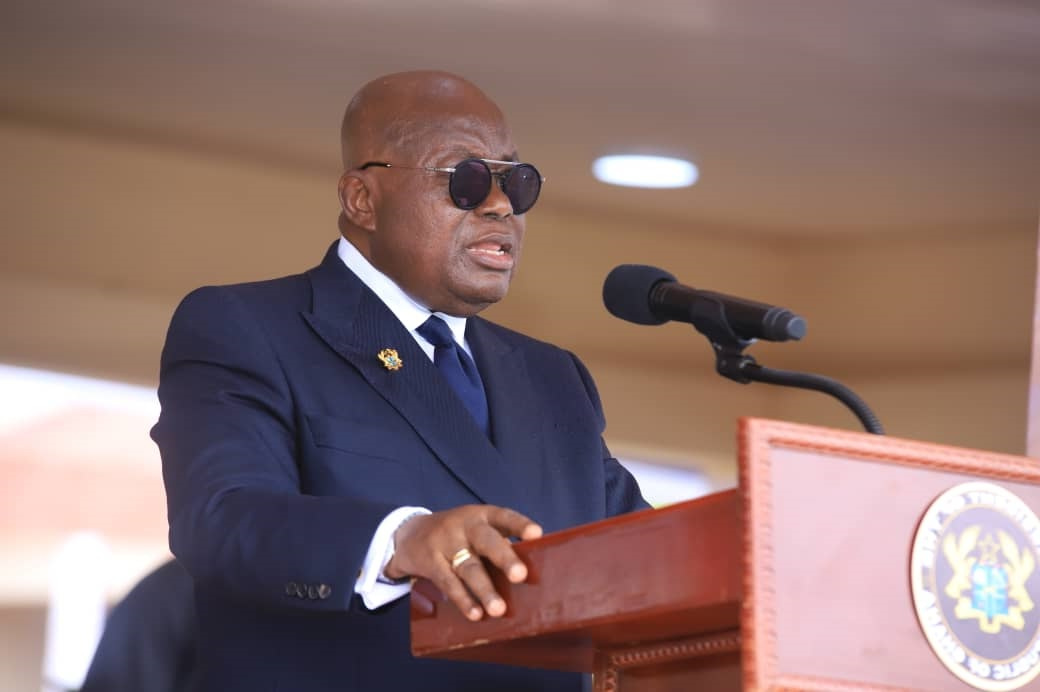The United States Supreme Court has allowed President Donald Trump to enforce his policy of banning certain transgender people from the military.
The court voted 5-4 to grant a Trump administration request to lift injunctions blocking the policy while challenges continue in lower courts.
The four liberal judges on the court opposed the ruling.
The policy prohibits “transgender persons who require or have undergone gender transition” from serving.
The Trump administration had also appealed for an expedited ruling on the case, which the Supreme Court declined to take up.
What is the transgender policy?
The president announced on Twitter in 2017 that the country would no longer “accept or allow” transgender Americans to serve in the military, citing “tremendous medical costs and disruption”.
The then defence secretary Jim Mattis refined the policy to limit it to transgender individuals with a history of gender dysphoria, or when a person’s biological sex and identity does not match.
He said the new policy would make exceptions for several hundred transgender people already serving openly or willing to serve “in their biological sex”.
There are currently some 8,980 active duty transgender troops, according to Department of Defence data analysed by the Palm Center, a public policy nonprofit.
Gen Mattis in his memo argued that “by its very nature, military service requires sacrifice,” and that those who serve “voluntarily accept limitations on their personal liberties”.
The move is a reversal of an Obama administration policy that ruled transgender Americans could serve openly in the military as well as obtain funding for gender re-assignment surgery.
This is just one Supreme Court action – and it’s a procedural move, not a formal court opinion – but it may be a sign that a conservative majority sympathetic to presidential powers and prerogatives is flexing its muscles.
The Trump administration, frustrated that lower-court judges had again blocked implementation of one of its policy decisions, asked the justices to step in and clear the path.
The White House wanted a quick ruling because, it said, allowing transgender individuals to serve in the military presented “too great a risk to military effectiveness”.
By a bare majority, the court complied.
Although the justices did not entirely bypass the Ninth Circuit Court of Appeals, which the president has tried to paint as a bastion of liberal judges, they did the next best thing for the president.
They permitted the transgender ban to go into effect while the legal fight, which could last years, grinds on.
For the past two years, the president’s opponents – locked out of national power until recently – have looked to the judicial system as a last line of defence.
As Tuesday clearly showed, however, those defences are only as strong as a majority of the Supreme Court says they are.
What are the legal challenges?
Several trial judges around the country had issued injunctions blocking the ban.
One injunction was reversed in a federal appeals court earlier this month, with a three-judge panel ruling the policy was not a “blanket ban” on transgender troops, and so the courts should defer to the executive branch’s military decisions.
While Mr Trump’s rationale for banning transgender troops was financial, according to estimates by the RAND Corporation, a policy think tank working with the US Armed Forces, transition-related healthcare costs are between $2.4m (£1.8m) and $8.4m per year.
In 2017, defence data viewed by the Palm Center indicates that cost was in fact lower, at $2.2m.
Solicitor General Noel Francisco had described the transgender ban in his fast-track appeal as “an issue of imperative public importance” regarding the military’s authority “to determine who may serve”.
Mr Franscisco acknowledged the RAND figures in the appeal, but argued “the realities associated with service by transgender individuals are more complicated than the prior administration or RAND had assumed”.








